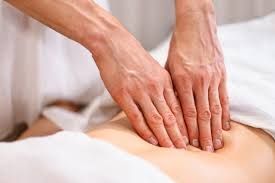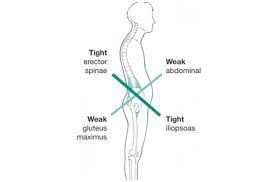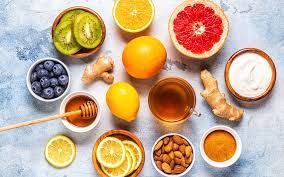Visceral Massage: Supporting the Body from the Inside Out

When most people think about massage, they picture sore shoulders, tight hamstrings, or a knot in the middle of their back. But did you know massage can also target areas inside the body? We’re not talking about bones or muscles this time—we’re talking about your organs. Visceral massage, sometimes called visceral manipulation, is a specialized form of therapy that focuses on releasing restrictions around the organs in your abdomen and chest.
This technique may sound a little different than what you’re used to, but it has been shown to help with everything from digestion to chronic pain. Let’s break down what visceral massage is, why it works, and who may benefit.
What is Visceral Massage?
Visceral massage is a gentle, hands-on therapy designed to restore normal movement and function of the body’s internal organs—your stomach, liver, intestines, bladder, diaphragm, and more. Every organ is surrounded by connective tissue called fascia. This fascia supports and anchors each organ in place while still allowing it to glide and move as you breathe, twist, and bend.
Just like muscles, fascia around the organs can become restricted due to injury, surgery, infection, inflammation, or chronic stress. When the organs lose mobility, it can affect circulation, nerve supply, and how other structures around them move. Over time, these restrictions may contribute to symptoms such as bloating, constipation, back pain, or even difficulty breathing.
A licensed massage therapist trained in visceral massage uses gentle pressure and precise movements to identify areas of restriction and encourage normal mobility. While the technique feels subtle compared to deep tissue massage, its effects can be powerful.
Why is Visceral Massage Effective?
The body is deeply interconnected—your organs don’t just sit in isolation. They share fascial connections with muscles, nerves, and bones. When one area is restricted, the tension can spread and show up in seemingly unrelated symptoms.
Here’s why visceral massage works so well:
1. Improves Organ Mobility
Your organs naturally move as you breathe, twist, and stretch. For example, your kidneys shift slightly up and down about an inch with each breath. Scar tissue, inflammation, or tight fascia can limit this movement. Visceral massage helps restore the natural glide of these structures, making everyday movement more comfortable.
2. Supports Circulation and Nerve Flow
When fascia is tight, it can reduce blood flow and compress nerves. By releasing restrictions, visceral massage encourages healthy circulation and communication between your organs and nervous system.
3. Relieves Referred Pain
Many people are surprised to learn that organ dysfunction can cause pain in other areas of the body. For instance, restrictions around the liver or gallbladder can sometimes create pain in the right shoulder, while issues in the intestines may contribute to low back pain. Visceral massage addresses these root restrictions, which may help reduce discomfort elsewhere.
4. Enhances Digestion and Elimination
Because visceral massage works directly with the abdomen, it can stimulate natural motility of the digestive tract. Patients often report feeling lighter, less bloated, and more regular after treatment.
5. Calms the Nervous System
The abdomen houses the enteric nervous system—sometimes called the “second brain”—which communicates with your central nervous system through the vagus nerve. Gentle visceral massage may help shift the body out of “fight or flight” mode and into “rest and digest,” supporting relaxation and healing.
Who Can Benefit from Visceral Massage?
Visceral massage can be helpful for a wide range of people. Here are some of the most common groups who may see improvement:
1. Post-Surgical Patients
Scar tissue after abdominal surgery (such as C-sections, appendectomies, or hernia repairs) can create lasting restrictions around the organs. Visceral massage can gently address adhesions and restore better mobility to the area.
2. Individuals with Digestive Issues
People who struggle with bloating, constipation, or abdominal discomfort often benefit from this therapy. By supporting natural organ movement and motility, visceral massage can ease tension in the digestive tract.
3. Those with Chronic Back or Pelvic Pain
Sometimes back pain isn’t just about tight muscles or misaligned joints—restricted fascia around the organs can play a role too. For example, tightness in the intestines can contribute to low back or hip discomfort.
4. People with Breathing Difficulties
The diaphragm, your main breathing muscle, is closely tied to the liver and stomach. Restrictions in these areas can limit your ability to take a full, deep breath. Visceral massage can help free up this motion and support better lung function.
5. Athletes and Active Individuals
Athletes put unique demands on their bodies. Visceral massage can improve overall mobility, reduce tension patterns, and support recovery—helping active people move with less restriction and greater efficiency.
6. Anyone Experiencing Stress-Related Tension
We all know that stress tends to land in the gut. Because visceral massage works with the nervous system and abdominal fascia, it can help release stored tension and promote relaxation.
What to Expect During a Visceral Massage Session
If you’ve never had visceral massage before, you might be curious about what it feels like. Unlike deep tissue or sports massage, visceral work is gentle and precise. Here’s what a typical session looks like:
- Assessment: Your therapist will ask about your health history, symptoms, and goals. They may also gently palpate (feel) your abdomen and rib cage to identify areas of restriction.
- Treatment: Using light but focused pressure, your therapist will apply slow movements to the abdomen, rib cage, and sometimes the lower back or pelvis. Many people describe the sensation as a gentle stretching or release.
- Aftercare: Some patients feel immediate relief, while others notice improvements over a few days. It’s common to feel lighter, less tense, or even more energized following a session. Drinking water and moving gently after treatment can help support the release process.
Why See a Licensed Massage Therapist for Visceral Massage?
Visceral massage requires advanced training and a thorough understanding of anatomy. It’s important to seek care from licensed massage therapists who specialize in this technique. At our office, our therapists have undergone additional education to safely and effectively provide visceral massage for patients dealing with everything from post-surgical adhesions to chronic pain.
When combined with chiropractic care, visceral massage can be especially powerful. By addressing both the musculoskeletal system and the fascial connections of the organs, patients often experience greater mobility, reduced pain, and improved overall function.
Is Visceral Massage Right for You?
If you’ve been struggling with digestive discomfort, chronic tension, or pain that hasn’t fully responded to traditional therapies, visceral massage may be worth exploring. It offers a unique way to release restrictions deep within the body, supporting both comfort and function.
Here at Peak Performance, our licensed massage therapists are trained in this specialized technique and would be happy to discuss whether visceral massage could help you. Schedule an appointment today and experience how gentle, focused touch can make a big difference—inside and out.












